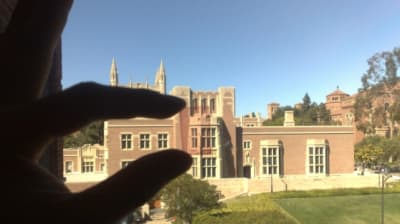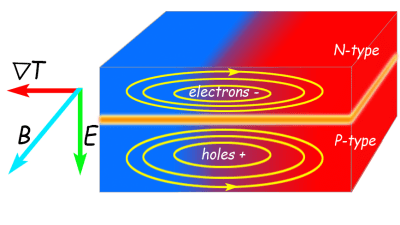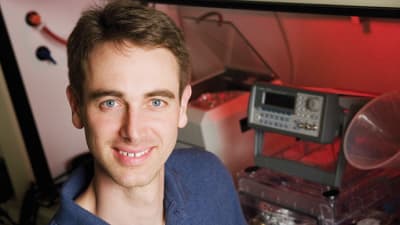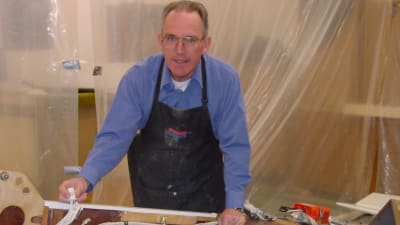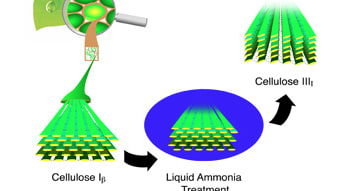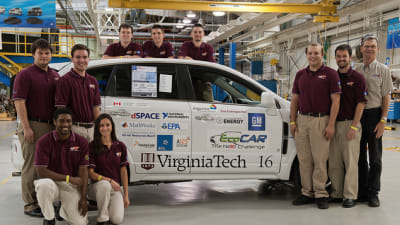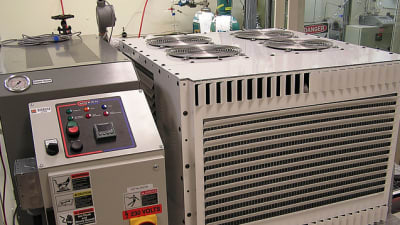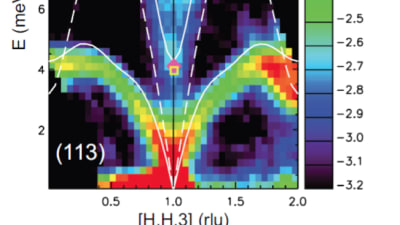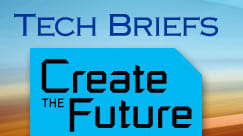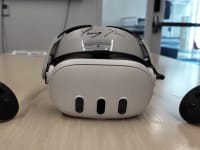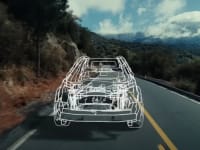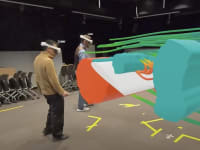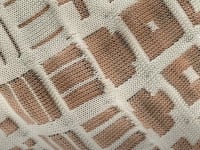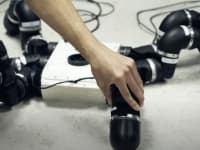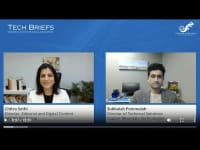61
12,105,170,194,926
-1
3930
30
Question of the Week
Is a GPS-based meter a promising model for cars?
This week's Question: Countries like the Netherlands have recently undergone trials of an automobile GPS system that uses a mileage-based formula to calculate charges based on individual car trips. In particular tests, a tabulation takes into account a car's fuel efficiency, the time of...
Blog
Meet Our Readers
Last month, in an effort to learn more about the everyday challenges of design engineers, we began a series of Q&As with TechBriefs.com readers.
Our most recent interviews showcase a wide range of careers, including furniture makers, filtration system engineers, aircraft navigation specialists, and medical device designers. Despite...
News: Energy
Pacific Northwest National Laboratory (PNNL) researchers have used a common protein to guide the design of a material that can make hydrogen gas. The synthetic material works ten times...
News: Energy
UCLA engineers have created a novel concept for harvesting and recycling energy for electronic devices — one that involves equipping these devices' LCD screens with...
Question of the Week
Are airborne iPads a risk?
This week's Question: A growing number of airlines, including Alaska Airlines, are giving pilots the option of using iPads in the cockpit. In a flight scenario, the iPad would take the place of the hefty manuals and training documents that the Federation Aviation Administration requires pilots to have on hand. Some pilots...
News: Green Design & Manufacturing
Understanding How the Ocean Impacts Climate Change
Lisa Collins, an environmental studies lecturer at the University of Southern California, spent four years collecting samples from floating sediment traps in the San Pedro Basin off the Los Angeles coast, giving scientists a peek at how much carbon is locked up in the ocean and where it comes from.
News: Energy
Yesterday, the DOE announced that Philips Lighting North America won the first award under the Department's Bright Tomorrow Lighting Prize (L Prize) competition. DOE's L Prize challenged the lighting...
News: Energy
NASA, the U.S. Agency for International Development, the U.S. Department of State, and NIKE formed LAUNCH to identify, showcase, and support innovative approaches to global challenges through a...
News: Energy
Berkeley Lab scientists have found that temperature gradients in semiconductors, when one side of the device is hotter than the opposite side, can produce electronic vortices...
Question of the Week
Will greater robotics initiatives hurt more than help?
This week's Question: Last month, the White House announced the National Robotics Initiative, a major program to develop next-generation robots for manufacturing, healthcare, and other areas. The robotics community received the project with enthusiasm, but some observers expressed concern about...
News: Green Design & Manufacturing
Researchers at the University of Illnois at Urbana-Champaign have demonstrated the first optoelectronically active 3D photonic crystal - an advance that could open new avenues...
Question of the Week
Is there money in the moon?
This week's Question: Driven by a $30 million prize put up by Google, more than two dozen teams have signed up for a competition to become the first private venture to land on the Moon. That means spacecrafts could be heading out within a few years, and many entrepreneurs are developing possible ideas that could...
News: Aerospace
In a new series, the editors of NASA Tech Briefs magazine catch up with everyday engineers about their unique responsibilities and challenges. This week, we highlight...
News: Energy
Researchers at Los Alamos National Laboratory and Great Lakes Bioenergy Research Center have found a potential key for unlocking the energy potential from non-edible biomass materials such as corn leaves and...
Question of the Week
Should we say good-bye to the incandescent light bulb?
While Congress failed to repeal light bulb efficiency standards last week, many had been debating the importance of LED bulbs and compact fluorescents. Supporters of incandescents say that the light source is cheap compared to alternatives, and its quality is fairly good. Others argue that the...
News: Energy
A team of researchers led by Jan Kleissl, a professor of environmental engineering at the UC San Diego Jacobs School of Engineering, determined that during the day, a building’s ceiling was 5 degrees...
News: Lighting
A team of researchers have demonstrated how semiconductor nanocrystals can be doped in order to change their electronic properties and be used as conductors. This opens a world...
News: Energy
The DOE and Georgia Institute of Technology offer a new database highlighting the energy potential available in the U.S. from ocean tides. This online database is an important step towards providing...
Question of the Week
Will 3D laptops catch on?
Last week, Toshiba unveiled a glasses-free 3D laptop, the Qosmio F750. The screen displays 2D and 3D simultaneously in separate windows. The display uses a lenticular lens sheet, capable of sending slightly different images to the left and right eye separately, thus giving the user a sense of image depth. The computer has...
News: Energy
A team of students from Virginia Tech University won EcoCAR: The NeXt Challenge after designing and building an extended-range electric vehicle (EREV) using E85 (ethanol). Virginia Tech competed against 15...
News: Energy
Chemistry researchers at the University of Adelaide, Australia are exploring how metal nanoparticles act as highly efficient catalysts in using solar radiation to split water into hydrogen and oxygen.
Question of the Week
Will we avoid a mass marine extinction?
This week's Question: In a preliminary report from the International Programme on the State of the Ocean, a scientific panel concluded that ocean degeneration is happening much faster than previously predicted, and that the combination of factors currently distressing the marine environment is contributing...
News: Energy
New technology is being developed at Oregon State University to capture and use the low-to-medium grade waste heat from automobiles, diesel generators, or factories and...
News: Transportation
Neutron analysis of the atomic dynamics behind thermal conductivity is helping scientists at the Department of Energy's Oak Ridge National Laboratory (ORNL) gain a deeper...
Blog
Parlez-Vous Francais? No, But My Phone Does.
As you can probably tell by what I do for a living, I have a good command of the English language. Unfortunately I do not have similar skills when it comes to mastering other languages.
I took two years of high school Spanish and still have trouble ordering lunch in a Mexican restaurant. My wife was born...
News: Green Design & Manufacturing
University of Minnesota researchers have developed an innovative approach to tapping heat beneath the Earth’s surface. The method is expected to not only produce renewable...
Question of the Week: Green Design & Manufacturing
Will “smart grid” efforts succeed?
The White House announced last week that is was planning to forge ahead with "smart grid" plans for the United States. By increasing controls technology and digital information, the effort would potentially update the American electrical transmission system to provide real-time information about the state of...
News: Energy
There are only 10 days left to enter the 2011 "Create the Future" Design Contest, sponsored by COMSOL, Creo - a PTC product, and Tech Briefs Media Group. The contest will award a Grand Prize of $20,000 USD for...
News: Green Design & Manufacturing
DOE has announced that up to $70 million is available in funding for technology advancements in geothermal energy. Innovations in exploration technologies to...
Top Stories
Blog: Manufacturing & Prototyping
2025 Holiday Gift Guide for Engineers: Tech, Tools, and Gadgets
INSIDER: Research Lab
Scientists Create Superconducting Semiconductor Material
Blog: Software
Quiz: Materials
Blog: Aerospace
Tech Briefs Wrapped 2025: Top 10 Technology Stories
Blog: Manufacturing & Prototyping
Webcasts
 Upcoming Webinars: AR/AI
Upcoming Webinars: AR/AI
The Real Impact of AR and AI in the Industrial Equipment Industry
 Upcoming Webinars: Motion Control
Upcoming Webinars: Motion Control
Next-Generation Linear and Rotary Stages: When Ultra Precision...
 Upcoming Webinars: Energy
Upcoming Webinars: Energy
Hydrogen Engines Are Heating Up for Heavy Duty
 Podcasts: Medical
Podcasts: Medical
How Wearables Are Enhancing Smart Drug Delivery
 Podcasts: Power
Podcasts: Power
SAE Automotive Podcast: Solid-State Batteries



